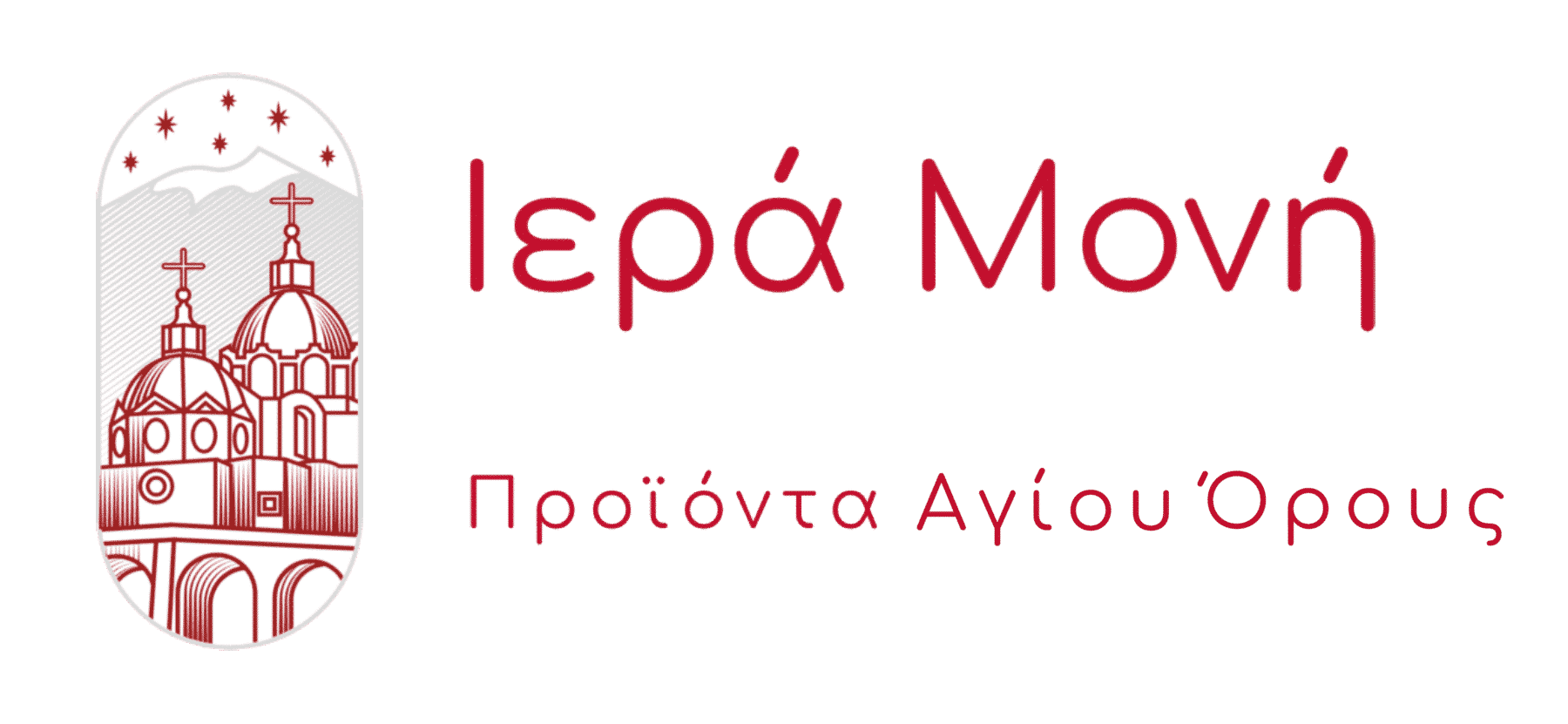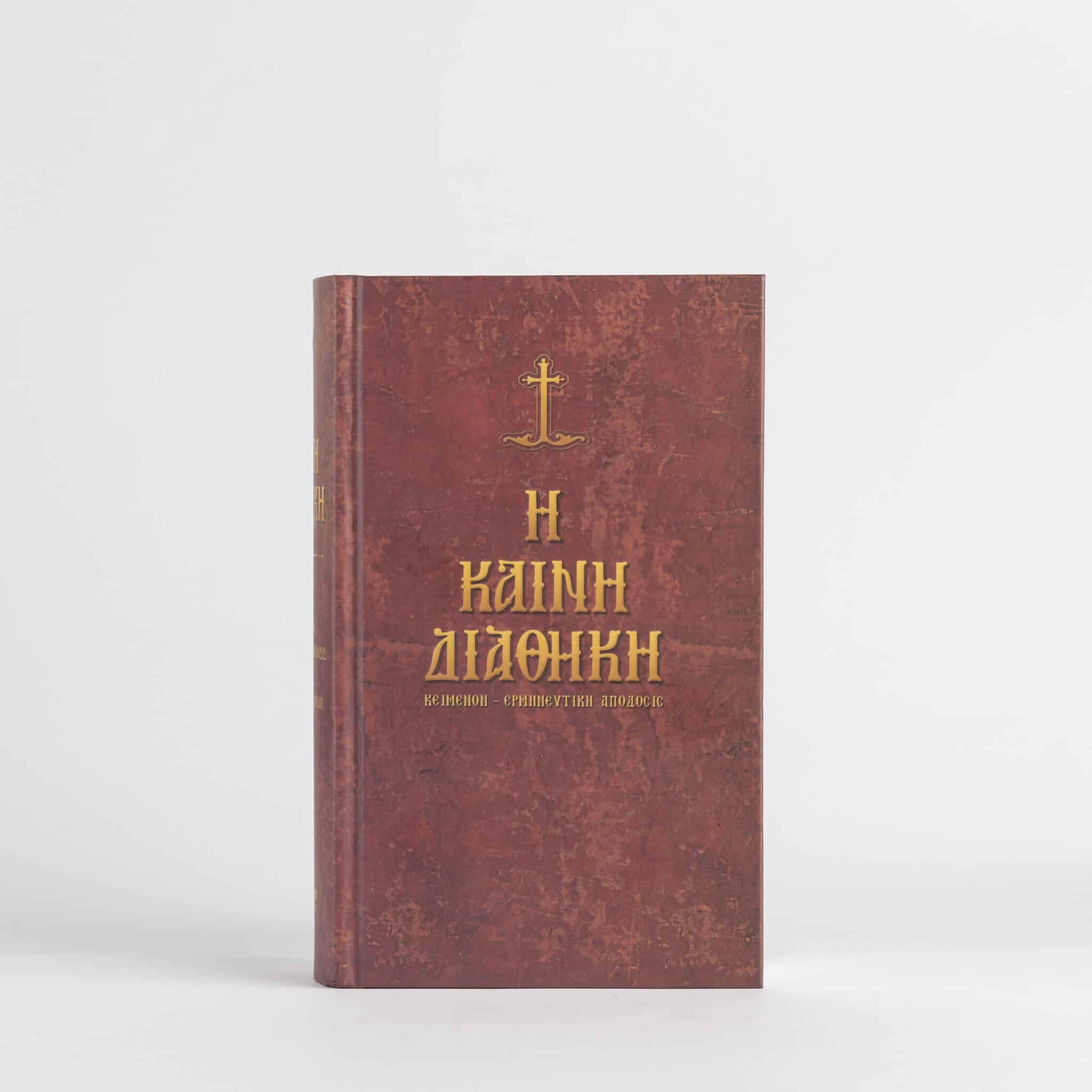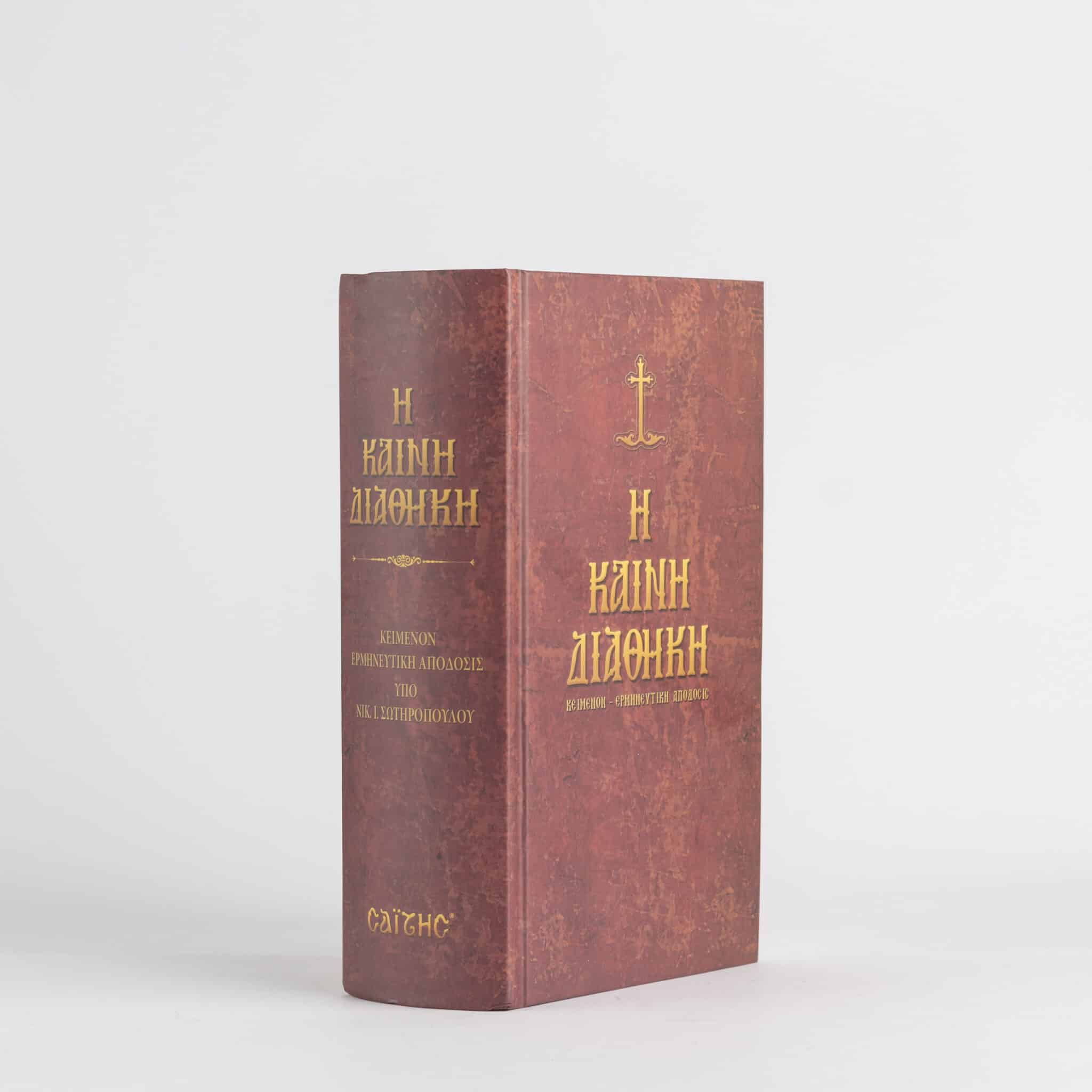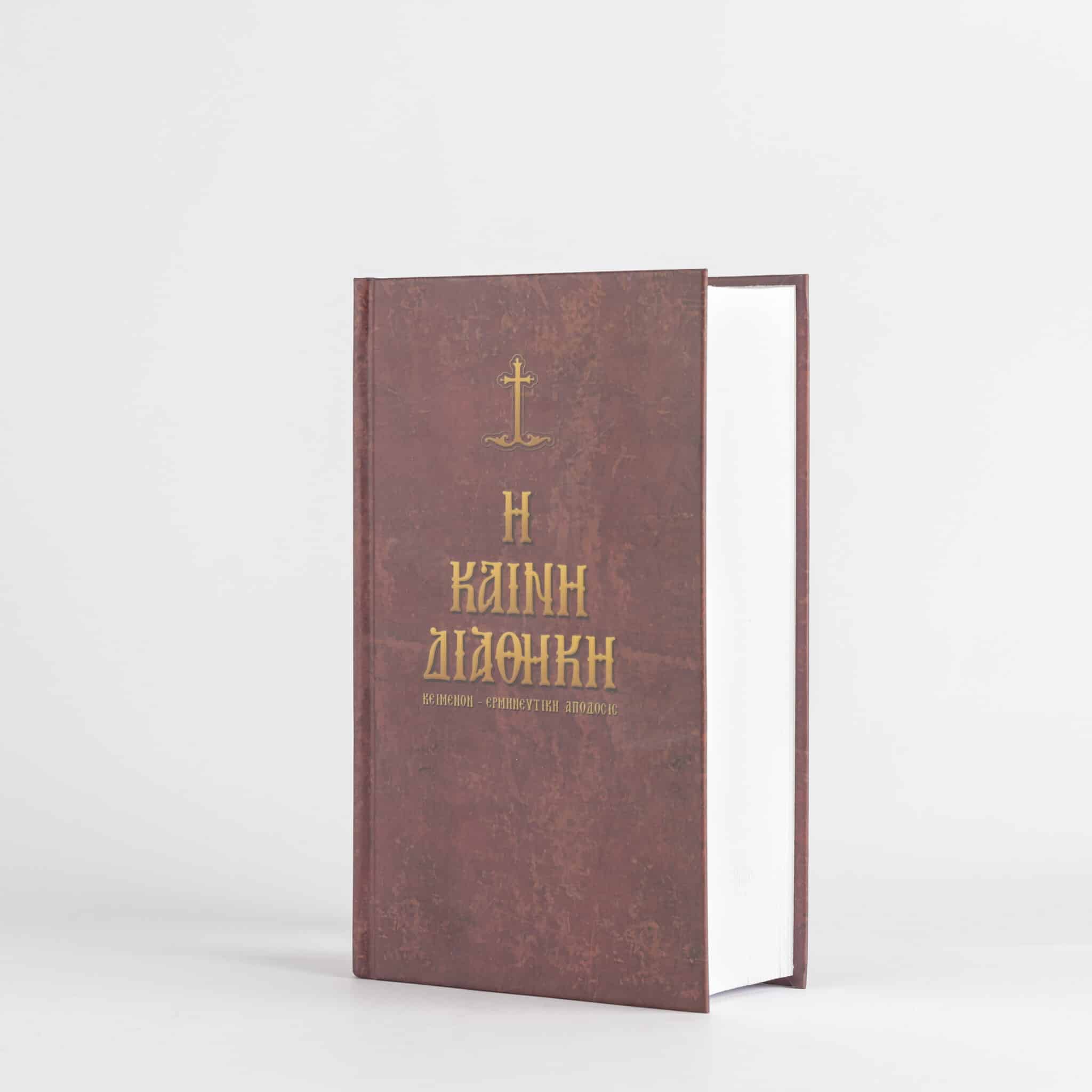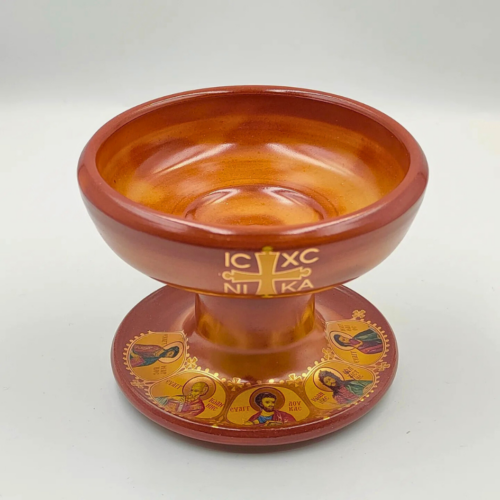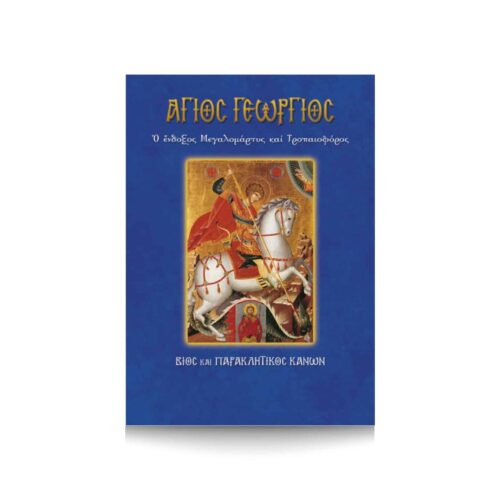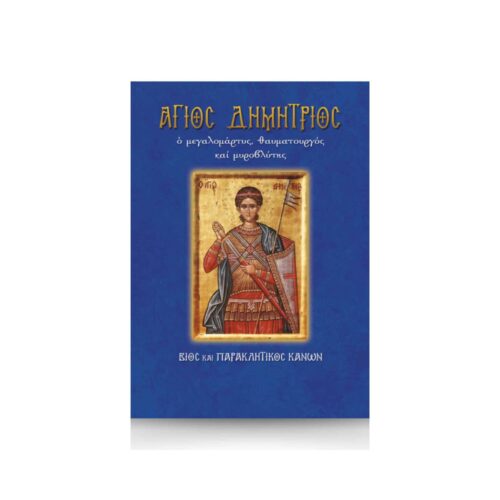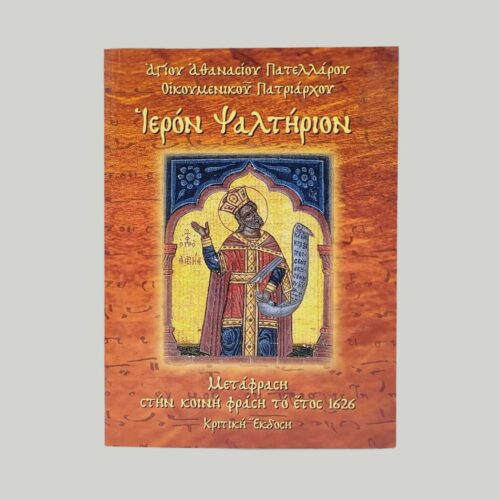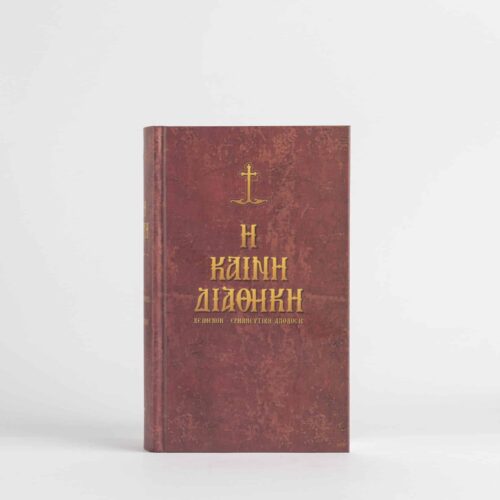The New Testament original and translation 1184p. Responsible, thorough and original attempt to interpret difficult passages of the Bible.
The New Testament original and translation 1184 p
Out of StockOriginal price was: €13,42.12,50 €Current price is: €12,50.
Description
The New Testament original and translation 1184 p
The New Testament with translation into elementary school. Responsible, thorough and original attempt to interpret difficult passages of the Bible.
Her scholar praises God who can enjoy this work.
Texts and interpretive performance of the theologian philologist Nikolaos I. Sotiropoulos.
At the beginning of the book called the New Testament are the four gospels: Matthew, Mark,
According to Luke and John, which narrate the basic points of the life and teaching of Jesus Christ, with the most important events being His crucifixion and resurrection.
The ancient word "gospel" means "good news" and exists at the beginning of the Gospel of Mark, which begins with the phrase: "the beginning of the gospel of Jesus Christ, the son of God."
In fact, there is a gospel: the gospel of Jesus Christ, that is, the good news that the Son of God became man, to make every man a son of God.
That is why the four books, which narrate the events of Christ's earthly life and work, are called gospels by Christians.
Because there is only one gospel, the gospel of Jesus Christ, which is written in four different forms, we do not say
"The gospel of Matthew", "of Mark", "of Luke" and "of John", but "the gospel of Matthew" (ie the gospel of Christ, according to Matthew = according to Matthew)
"According to Mark", "according to Luke" and "according to John".
These four books are also called "the fourfold gospel" or "fourfold angel".
The oldest of the four gospels is the one according to Mark. The holy evangelist Mark was a disciple of the apostle Peter, but his mother was a disciple of the Lord.
The descent of the Holy Spirit had taken place in her house, fifty days after the resurrection of Christ, and probably the Last Supper also took place there.
Mark, as a child, must have known Christ and is probably the "youth" who had secretly followed Christ and his disciples
After the Last Supper he was wrapped in a sheet and saw the arrest of the Lord in the Garden of Gethsemane.
Mark himself mentions this in chapter 14 of the Gospel of Mark, in verses 51-52.
The evangelist Matthew is one of the 12 apostles and, in order to write the gospel, it is obvious that he also used the source according to Mark, to which he added his own information, starting from the birth of Christ.
His gospel was written second, but entered first in the New Testament collection, because it begins to tell the story of Jesus Christ, not just from His birth, but from a list of His ancestors (of His genealogy),
which was necessary for his Jewish readers to understand that Jesus was a genuine Jew and not someone of unknown origin.
Of course, the ancestors mentioned by St. Matthew are the ancestors of St. Joseph, the Virgin's fiancé, but from Joseph's grandfather and back to Abraham, they are also the ancestors of the Virgin, that is, of Christ.
The evangelist Luke was a physician, close friend, and associate of the apostle Paul.
Maybe he was also a disciple of Paul. But in one sense he was one of the 70 disciples of Christ mentioned by Luke himself in chapter 10 of the Gospel of Luke,
and in fact he may be one of the two apostles who met the Lord after His resurrection on the road to Emmaus, which Luke also mentions in the last chapter of his book.
St. Luke used the Gospel of Mark and the Gospel of Matthew as sources, but he supplemented it with a lot of information, which begins to tell the story of Christ from a very early age.
from the Annunciation of the Virgin, and even further back, from the pregnancy of St. Elizabeth, mother of St. John the Baptist.
Luke is the evangelist who gives the most information about the Virgin Mary and the childhood of the Lord and philologists believe that he met the Virgin Mary and received information from her.
The ancient tradition of the Church says that Saint Luke was the first to paint the Virgin Mary and her holy figure was left in history by some of its ancient icons, painted by the evangelist Luke.
The evangelist John is one of the 12 disciples of the Lord and indeed the youngest, towards whom it seems that the Lord manifested a somewhat increased affection and protection.
That is why, as John himself writes, he was the "beloved disciple" of Jesus.
St. John wrote the gospel after the other three evangelists and it seems that he wanted to complete their own narratives, which is why he mainly narrates episodes that are missing from the other three gospels.
The Gospel of John is written in a philosophical way, because it was probably addressed to readers with a philosophical education.
He begins his narration (like Mark) from the baptism of Christ, that is, when the Lord is about 30 years old,
although in the preface of the gospel John gives some very important information about the Deity of Christ, about His eternal existence close to God the Father and about His mission to the world.
There he calls Christ "Word" and "Only begotten Son" of God, names with deep meaning, which play a key role in the Church's teaching about Him.
That is why the evangelist John is characterized as "Saint John the Theologian".
B) The Acts of the Apostles
After the Gospel of John, in the New Testament there is a book called Acts of the Apostles. Its author is the holy evangelist Luke and it is a continuation of the Gospel of Luke.
In this book, Luke tells the story of the apostles, that is, the disciples of Christ, starting from His ascension and proceeding to Pentecost, that is, the descent of the Holy Spirit,
who enlightened the apostles fifty days after the resurrection of Christ (hence it is called "fiftieth", ie the 50th day), and continues with the adventures of the first Christians,
explaining their admirable way of life, which was full of faith, love and self-sacrifice.
It speaks of the martyrdom of St. Stephen, of the repentance of the apostle Paul (who, from a mortal enemy of Christians, became an apostle of Christ,
after a shocking vision of the divine Light) and finally narrates the struggle of Paul to transmit the message of Jesus Christ to all nations,
until he is in danger of being killed by the Jews and is eventually imprisoned by the Romans and taken to Rome, to be tried as a troublemaker by the emperor's court.
The Acts of the Apostles (as well as the Gospels) is a fascinating book, with many lessons,
whose study will help us understand why many things in Christianity are done in one way or another, starting from the time of the apostles and the first Christians.
C) The letters of the apostles
After the Acts of the Apostles, in the New Testament there are letters,
that is, letters, sent by some of the holy apostles to various communities of early Christians ("local Churches", as we say, ie gatherings of Christians in various cities) or to persons.
These letters are important because they address almost every issue of moral and spiritual life, as well as important theological issues, about who Jesus Christ was and His mission to the world.
The letters of the apostles, that is, are a necessary guide of man in his quest to draw closer to God.
The apostles had written other letters, but the New Testament includes those who were saved.
Thus, we have 14 letters of the apostle Paul, 2 of the apostle Peter, 3 of the evangelist John, one of St. James of the Brotherhood and one of the apostle Judas (not of Iscariot, who betrayed Christ).
This James and Judas are two of the so-called "brothers of the Lord", that is, sons of St. Joseph by his first wife, who had slept before he was engaged to the Virgin Mary.
The 14 letters of the apostle Paul are: to the Romans, AD and NW to the Corinthians (ie 1st and 2nd letter to the first Christians of Corinth),
to Galatia, to Ephesians, to Philippians, to Colossians (in the city of Colossae in Asia Minor), AD and NW to Thessalonians, AD and NW to Timothy, to Titus, to Philemon and to the Jews.
The letters of the other apostles are described as "universal", that is, "universal", universal (this means the word "catholic", long before the modern Roman Catholic Church adopted it as its name).
In the Divine Liturgy and other Christian ceremonies, when the psalmist reads the Apostle (before the priest reads the Gospel), it is an excerpt from a letter of the apostles (mainly the apostle Paul) or from the Acts of the apostles.
D) The Apocalypse of St. John
The New Testament and the whole Bible end with the Revelation of John.
It is a great and complex vision, seen by the holy apostle and evangelist John, when he was old and exiled by the Romans on the island of Patmos.
In fact, it is a "Revelation of Jesus Christ" given to men through John. According to tradition, John described what he saw and was written by his disciple, Saint Prochoros.
Revelation contains seven letters of Jesus Christ to seven Christian communities in Asia Minor and then through a kind of heavenly divine service involving angels, humans and himself.
Christ, in the symbolic form of a sacrificial lamb, prophecies are given about many events,
which culminate in the Second Coming of the Lord, the resurrection of the dead, and the description of the future paradise and eternal life of men.
that is, the last demonic cosmopolitan (he will probably not be a politician, but a holder of economic power),
that people will worship him as a god and he will kill whoever does not worship him.
The Antichrist will fall from power with a great war, Armageddon, and with the intervention of Christ himself.
Although most of the events described in Revelation are dramatic, its message is optimistic and encouraging: in the end Christ will prevail, while Evil, the devil and his associates, will be defeated and neutralized forever.
The dead will be resurrected, and those who are "written in the book of life" because they were faithful and virtuous,
they will live in the kingdom of God, that is, in paradise. But some (the unrepentant servants of falsehood, corruption, and the devil) will not enter heaven, but hell.
Revelation is impossible to interpret with certainty. It contains a strong symbolic element, which we can not know exactly with what kind of events it will be verified.
We can only understand general things, with the help of the gospels and letters of the apostles, where the Lord and the apostles
give some additional information about the Antichrist, the Second Coming, the resurrection of the dead and eternal life.
Objectionand doubts about the New Testament and THE ANSWERS TO THE WICKED.
When was the New Testament written and when was it established in the Church?
We have a definite proof that the Gospels of Matthew, Mark and Luke were written by about 60 AD at the latest.
We take this element from the book of Acts, which is also found in the New Testament, after the four gospels.
The Acts of the Apostles were written by the evangelist Luke and begin their narrative right where the Gospel of Luke ends.
So the Acts were certainly written around 60 AD, because they do not mention the important events in the history of the first Christians that happened after 60 AD,
such as the stoning to death of St. James the Brother (62 AD) and the martyrdom of the holy apostles Peter and Paul (c. 65 AD), nor of course the destruction of Jerusalem by the Romans in 70 AD.
Since Acts is a continuation of the Gospel of Luke, the gospel was written earlier.
But Luke was written after the Gospels of Matthew and Mark, because it contains whole passages.
Therefore, these three gospels were written no later than 60 AD. In other words, the first gospel may have been written in 40 or 50 AD, but we do not know when.
The Gospel of John was written a few years or a few decades later. In one sense, it was written before 70 AD.
Because in chapter 5, verse 2, he mentions the Baths of Bethesda as if it still existed in his time, while that place, together with the whole of Jerusalem, was destroyed by the Romans in 70 AD.
The letters of the apostles James, Peter and Paul were written before their martyrdom, of course, that is, before 65 and 62 AD. respectively.
The oldest of the letters of the apostle Paul that we have is considered the AD to the Thessalonians, which dates back to around 45 AD.
The Apocalypse of John is placed in the years 94-96 AD.
That is, at the time of the persecution of Christians by the Roman emperor Domitian, when the apostle John was exiled to Patmos (Revelation, ch. 1, verse 9)
When was the New Testament written?
New Testament translation
New Testament pdf
What new will to buy
New testament kolitsara
New testament book
New testament text
New Testament With A Brief Interpretation
New Testament apostolic ministry
With a brief interpretation in elementary school
Testament With a brief interpretation in
The New Testament In short
NEW TESTAMENT WITH A BRIEF INTERPRETATION
The New Testament In Short
New Testament H.
New Testament
of the New TestamentEditing code editing
New Testament With a brief interpretation
What is and what
the second part of it
The Old and the New
Testament was written by many authors
written by multiple editors within
New Testament was written by many
More information
| Weight | 1,8 kg |
|---|---|
| Dimensions | 20x14x5 cm |
Company
SAITIS PUBLICATIONS
You may also like…
-
12,00 €
Incense of Mount Athos 200gr Holy Sanctuary Ag. Ekaterina. They strictly preserve the natural fragrances and ecclesiastical compositions used by the churches and monasteries during Byzantium. The Monks have a long-standing tradition of making incense, since it is their main occupation in their ministry. It is noteworthy that its preparation is done in such a way that the incense does not get muddy on the charcoal.
